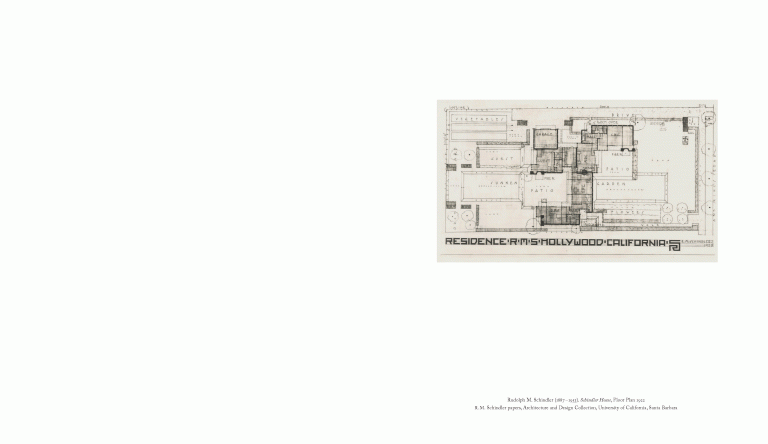Vincent Fecteau
Florian Pumhösl
I hear the ancient music of words and words, yes, that’s it.
“Imagining flows and clicks. The making of this exhibition at the Schindler House was a work in progress following the visible and invisible lines of the architecture and history of the building. The venue, the urban mapping of West Hollywood, the conversations with the artists Vincent Fecteau and Florian Pumhösl, staying and working together at the Fitzpatrick-Leland House during the installation of the show have been interfolding.
The architect Rudolph M. Schindler (1887-1953), a scholar of Otto Wagner and follower of Adolf Loos, emigrated from Vienna to the United States in 1914 and later worked for Frank Lloyd Wright. Schindler has contributed to modernism with experimental concepts and social-utopian ideas. The Schindler House on Kings Road, designed for two families with a sequence of rooms which alternate between private and communal, was the home of Rudolph and his wife Pauline Schindler (1893-1977), an art and architecture critic. They initially lived here with Marian and Clyde Chace. In this building, the architect has combined a unique and personal formal language, hybrid international vocabulary, and visions of Los Angeles and California.

Staged within this unique cross-section of modernism’s currents, this exhibition examines the relationship of images, objects, and legacies of abstraction. Together, the artists Vincent Fecteau and Florian Pumhösl orchestrate a dialogue between pictorial and three-dimensional work, studio production, and the architectural setting of the Schindler House as it relates to aspects of materiality, surface, pattern, color, and light. The layout of the exhibition plays with volumes, structures, and interrelations between the artists’ works developing a visual rhythm and sound.
In her novel The Hour of the Star, Clarice Lispector (1920-1977) mediates the act of writing as a work in progress. The title of the exhibition, “I hear the ancient music of words and words, yes, that’s it.”, is a quote, echoing the intimacy she generated in her writing and corresponding to space, moods, and history. Lispector emigrated with her family from the Ukraine to Brazil in 1922. In The Hour of the Star, written in the year of her death, Lispector shines a light on the connection between language, music, and time – her personal instruments for writing. She creates literature as a collage, a painting or a sculpture with contemporary icons and secret meanings. In the fictive introduction to her book she notes the music of Beethoven, Bach, Chopin, and Schönberg as inspirations – Schindler himself perceived architecture as music.”
Bärbel Vischer: Introduction, S. 5, in: Vincent Fecteau / Florian Pumhösl “I hear the ancient music of works and works, yes, that’s it.”, Verlag der Buchhandlung Walther und Franz König, 2022
Florian Pumhösl
16 September – 22 October 2022
opening on Friday, 16 September, 7-9pm
Vincent Fecteau, Florian Pumhösl
I hear the ancient music of words and words, yes, that’s it.
16 September – 22 October 2022
opening on Friday, 16 September, 7-9pm
